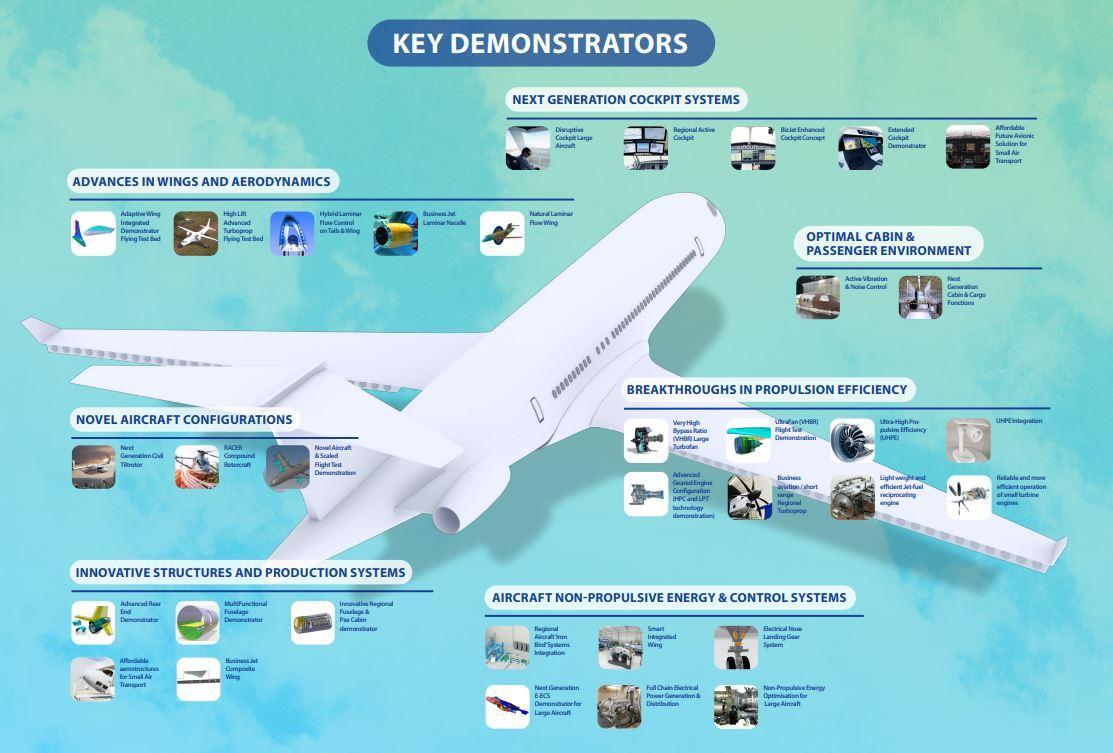Clean Aviation Partners Aim At High Production Rate For Lighter Fuselage

BERLIN—As Europe’s Clean Sky 2 research and technology project nears its end, Airbus and industry partners are expected to complete the construction of their multifunction fuselage demonstrator, aiming at lower cost and weight as well as fast-paced manufacturing.
Clean Sky 2 is running until 2024 and thus overlaps with Clean Aviation, both being run by the Clean Aviation joint undertaking (JU). Two-thirds of Clean Sky 2’s demonstrators have yet to be delivered, says Sebastien Dubois, Clean Aviation JU’s head of programs.
The multifunction fuselage demonstrator’s (MFFD) lower shell skin was manufactured over the 2021-22 period, according to Dubois. Completion of the 8 m. (26 ft.)-long barrel—representative of a similar section on an Airbus A321 single-aisle aircraft—is predicted for December 2023, according to Ralf Hermann, Airbus’ project manager for fuselage research and technology. It essentially uses thermoplastic composites.
The first target is directly linked to fuel efficiency, as the MFFD is to feature a 10% lower weight.
The other two goals have an indirect but strong connection to aviation’s decarbonization. A number of technologies, especially in propulsion, are expected to be more expensive. The MFF thus aims at offsetting some of the extra spending, thanks to 10% cheaper recurring costs.
Moreover, Clean Aviation executives insist next-generation aircraft will have to account for 75% of the global fleet in 2050, if new technologies are to have the required impact. The MFFD is thus aiming at high production rates, up to 100 units per month.
Thermoplastics can be welded together, a faster method than riveting. The new method also results in lighter weight. Moreover, thermoplastics are adaptable to different shapes during the manufacturing process. When heated, a thermoplastic resin softens and melts; when cooled down, it can re-solidify without losing any property.
The MFFD project also uses the concept of modularization, or the integration of complete subassemblies. The cabin floor, for instance, is a module, Herrmann says.
“Our goal is to demonstrate technology readiness level 5,” he says. “We will thus prove we are close to an industrial setup, [and] we can go quickly to production if the next program needs it.”
Airbus’ partners in the MFFD include the Fraunhoher Gesellshaft research and technology institute, German aerospace research center DLR, GKN-Fokker, Dutch research center NLR, the TU Delft university and offshoot SAM-XL, cabin interior specialist Diehl, composite aerostructures expert Aernnova, Spain-based composite research center FIDAMC and Saab. Toray is supplying the composites’ fiber and resin.

